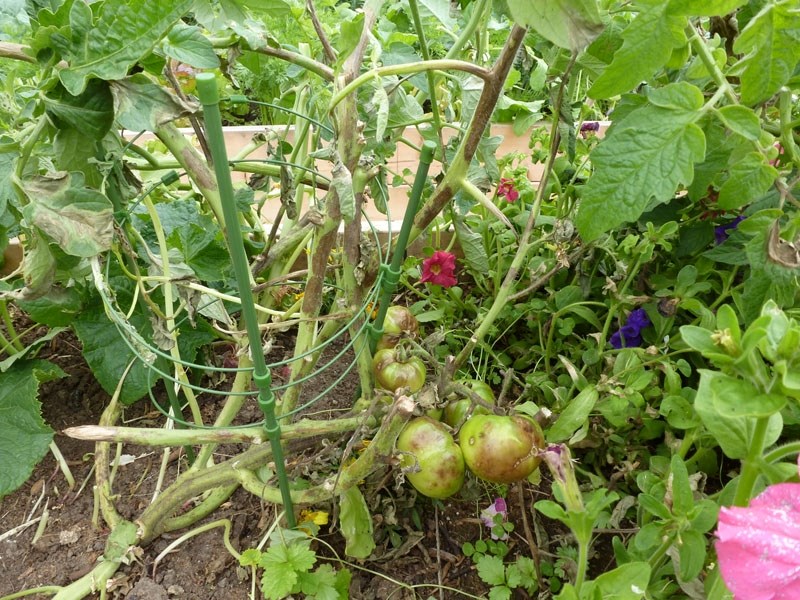Last weekend, gardeners tilling plots at the newly formed St. Albert Parish Heritage Garden discovered what no plant lover wants to find — late blight disease.
About half of the 40 plots growing tomatoes found the highly infectious late blight lesions growing on the fruit and stem.
“We’ve already taken the plants out and put them in black garbage bags and the city will pick them up for disposal,” said community garden organizer Judy Victoor.
Late blight is an airborne fungus that can infect and destroy a plant within a week. It affects mainly tomatoes and potatoes, but it can also infect related host plants such as eggplant, pepper and petunia.
Symptoms on leaves usually look like dark, water-soaked areas, sometimes with yellow leaves that move from leaf tips to the margins, becoming brown and brittle within a few days.
Tomato fruit and potato tubers develop reddish-brown, irregular spots often around the eyes. “The fruit can be eaten, but you don’t want to put them in storage because one bad one can ruin them all.”
Late blight grows quickly under moderate temperatures (12 to 24 C) and in the wet/humid conditions that Alberta has experienced in the last two years.
In fact, in 2010, a major outbreak of the blight was reported in southern Alberta, the first since 1993. It was also the first time in about 20 years Derrick Harrison, president of St. Albert & District Garden Club, documented the pathogen’s arrival into St. Albert.
“The spores can travel up to 30 kilometres in the wind and settle in moist potato and tomato plants that are growing,” he explains. “The major concern is that the infection comes from somewhere else. It more likely started in the outskirts in the west or northwest. That’s why it would travel 30 kilometres downwind.”
He believes the pathogens may have developed on plants grown by a market gardener or a farmer. However, commercial growers can spray their crops with specially treated fungicides. This option is not available to private gardeners.
In the case of potatoes, the fungal pathogens usually land on the leaves and quickly destroy them.
“If it rains, the infection spreads to the ground and penetrates the tubers. It will infect them and rot them. If any of the infected tubers are left in the ground, then they are a source of infection the following year,” Harrison said.
To date, the only community garden in St. Albert that reported late blight is St. Albert Parish Heritage Garden. The St. Albert Community Garden on Riel Drive reported it last year and has a moratorium on growing tomatoes and potatoes this year. St. Albert Botanic Park, however, has reported an infestation of the Colorado beetle that usually attacks potatoes.
“It’s a beetle that lives in the garden during winter. It crawls out and lays eggs on stalks of young potato plants and eats the tops. You can pick them off or use insecticides. The main thing is to not let them overwinter in the garden. If you don’t grow potatoes the next year, they have nothing to eat and die,” Harrison said.
Residents can dispose of large quantities of infected plants by bagging them and dropping them off at the St. Albert Compost Facility on Villeneuve Road.
A small number of plants can be disposed of at home.
“Just bag them and, instead of putting them in the green compost, put them in the regular brown garbage bins,” said City of St. Albert weed and pest team leader Kevin Veenstra.
He explains that the city’s composting facility cannot be sure they will reach high enough temperatures to destroy the pathogen. The preferred method of dealing with infected plants is to bury them at a landfill.
For additional information and photographs of the blight, visit www.stalbertgardenclub.info.




